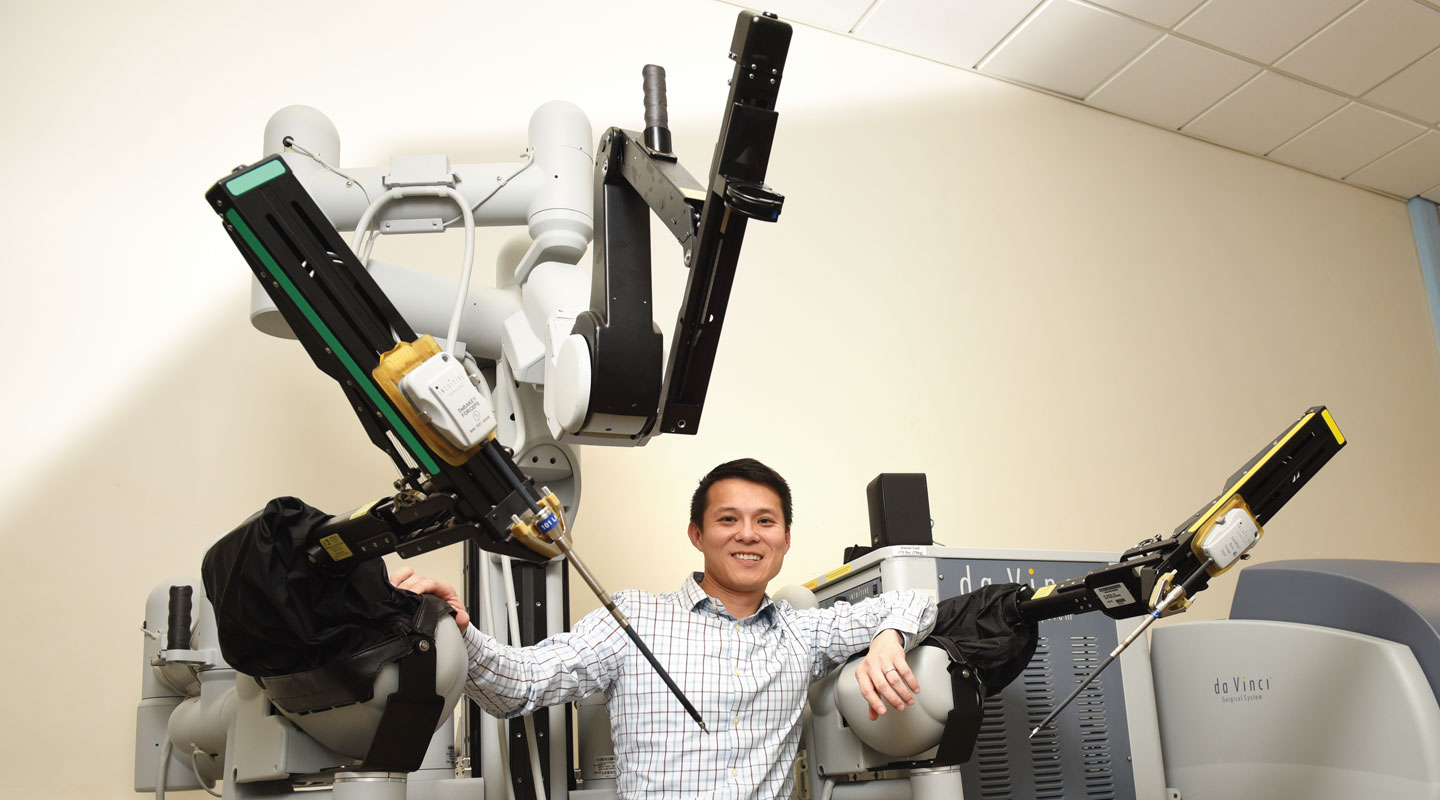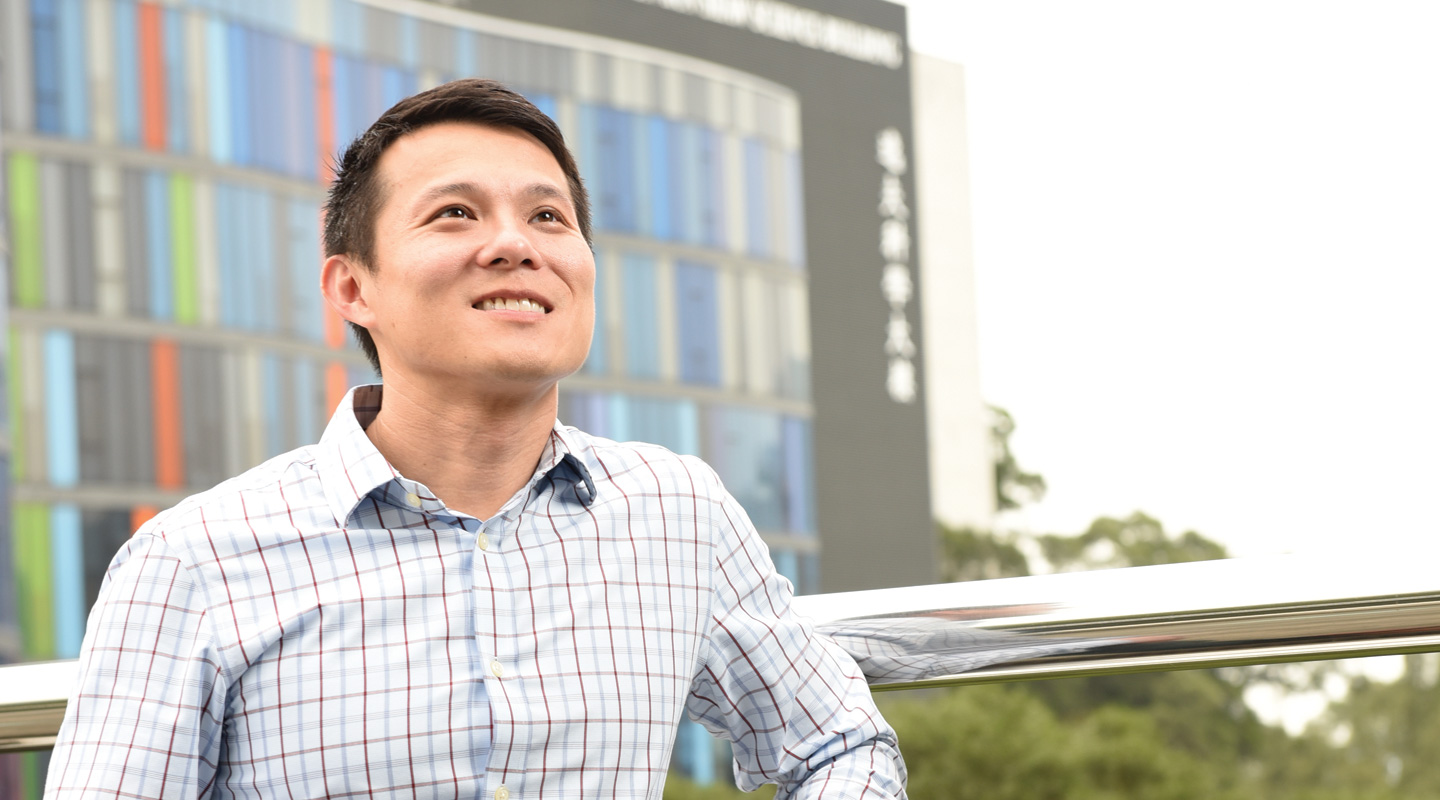Dear readers, With the launch of e-newsletter CUHK in Focus, CUHKUPDates has retired and this site will no longer be updated. To stay abreast of the University’s latest news, please go to https://focus.cuhk.edu.hk. Thank you.
A Strong Arm for the Surgeon

Prof. Samuel Au
Department of Mechanical and Automation Engineering
Co-inventor of the da Vinci Single-Site surgical platform
Two decades ago you enrolled in CUHK’s Mechanical and Automation Engineering (MAE) programme as its first batch of students. In retrospect, when was the turning point in your academic pursuit?
My final undergraduate semester at MAE coincided with Prof. Xu Yangsheng’s [currently President of CUHK(SZ)] joining the department. I remember the first time I attended his class he played an array of videos showing sophisticated robot designs by foreign inventors. I was enthralled by the advanced robotic development in other parts of the world, and aspired to making my way to the top game. This episode also led me to choose Professor Xu as my MPhil advisor. He continued to influence me in more ways than one and has made me who I am today.
How did you land on the path of designing robot-assisted medical devices?
During my seven years of PhD studies at the Massachusetts Institute of Technology in Boston, my supervisor at the MIT Media Lab Prof. Hugh Herr and I invented the robotic ankle-foot prosthesis, which mimics the action of a biological ankle and, for the first time, provides transtibial amputees with a natural gait. This invention was named one of the Best Inventions by TIME magazine in 2007.
It was through this project that I began to take real interest in designing robot-assisted medical devices. I found it fascinating to combine robotics with medicine, and realized robot-assisted surgery was an unexplored field which would greatly boost medical technology.
Tell us about the da Vinci Single-Site robot you co-invented and its uniqueness.
Upon graduation, I joined a California-based company called Intuitive Surgical where I co-invented the da Vinci Single-Site surgical platform. It became the first ever FDA-approved robotic platform to support single incision surgery.
Unlike traditional robotic surgeries requiring three to five incisions, da Vinci Single-Site surgery requires only a single, small incision in the belly button, through which the robotic arms and camera enter. A surgeon sits at a computer console viewing a 3D high-definition image of the patient’s anatomy, and guides the robotic arms to do the cutting and stitching. The end result is virtually scarless surgery. It is especially well received by female patients, because with this procedure there’s only one wound to heal, rather than three.

Having achieved so much in the US, why did you return to Hong Kong in 2016 to teach at your alma mater?
By teaching Advanced Robotics and Mechatronics at the MAE Department, I wish to help the University to bridge the gap between research prototype and commercial product. I’ve spent almost a decade in the industry and know such a gap is bigger than imagined. This is particularly true for medical device development. More often than not, a good idea does not necessarily lead to an impactful product.
To translate benchside research into bedside products, you have to begin with the end in mind. You need to be able to predict right at the beginning whether your concept strategically makes sense or not, and what problems will emerge in the manufacturing stage. Such foresight is what I want most to impart to my students.
Are you at present working on any new robotic project?
I am trying to make bona fide scarless robotic surgery possible. Current robotic keyhole surgeries still require at least a small cut at the navel to enable a rigid robotic endoscope to enter and do the surgery. A new flexible robotic system, now in development, does not require any external incision and allows the machine to easily navigate through body orifices into target organs. It’s the ultimate robotic surgery and also the hardest to achieve, but it will be realized in the not-so-distant future.
Will robots make surgeons obsolete?
No. I don't believe robots will ever take over from the surgeons. On the contrary, robots will become indispensable partners of surgeons to help them overcome their physical limitations and enhance their performance. Robots assist surgeons with technically demanding, repetitive tasks, but they are incapable of exercising judgement. Surgeons will have to make the kinds of minute-to-minute adjustments that can mean the difference between life and death, which even the most perfectly programmed robot can’t do. Doctors can decide why to operate and what to do, while machines can help with the ‘how’. This robot-surgeon partnership will produce better and more consistent surgical outcome and open up new and complex procedures.
This article was originally published in No. 498, Newsletter in May 2017.